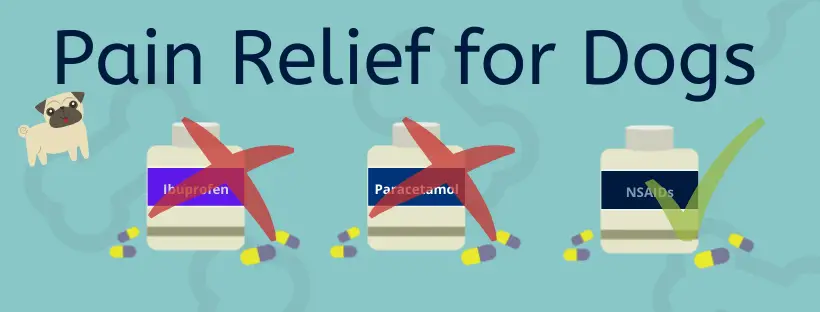Pain Relief for Dogs
It is important to identify when your dog is in pain and diagnose where the pain is coming from so that you can take the right action to get it the pain relief it needs.
Unlike humans, dogs cannot self-diagnose where their pain is coming from and can’t tell their owners that they are in pain. Because of this, it is important to be aware of signs that your dog is in pain, identify what is causing it, and take the best action to relieve them or seek special treatment.
What are Signs of Pain in Dogs?
Dogs can’t express their pain like humans do. Because of this, it can be difficult to spot that your pet needs help relieving their pain. It’s also difficult to understand the extent of your dog’s pain.
There are certain telltale signs that your dog is experiencing discomfort to be on the lookout for:
- Aggressive behaviour – Sudden changes in temperament, including episodes of aggression could be related to internal pain.
- Antisocial behaviour – Your dog may hide away and appear to be unusually antisocial. Any noticeable change in behaviour can be a cause for concern
- Reduced appetite – Loss of appetite or a noticeable difference in the amount of water your dog drinks is a common sign that your dog is in pain.
- Excessive grooming – Dogs will sometimes like their paws to soothe themselves when they are in pain. This is obvious for dogs with cuts that are healing but other times the pain will be internal.
- Panting – Dogs panting is perfectly normal. But if your dog is breathing heavily even without exercise this could be a tell tale sign that your pet is in pain.
- Mobility issues – Limping and trouble walking are more obvious signs that your dog is in pain. You may also notice that your dog has lost interest in activities they usually enjoy and not being as active as usual
- Restlessness – If your dog is finding it difficult to get comfortable and pacing back and forth they may be in pain
- Shaking – Although dogs shake when they are cold and it is common for older dogs to tremble, this can also be a sign of pain. Reasons for dog’s shaking could be a number of possible health issues and they may be in pain
Why is my Dog in Pain?
Many factors could lead to your dog being in pain, from the more obvious, like injuries from an accident or if your dog is in pain after surgery, to the less obvious health conditions.
The most common causes of pain in dogs include:
- Pancreatitis
- Bone Cancer
- Arthritis
- Periodontal Disease
- Slipped Disc
- Ear Infection
- Cystitis (bladder inflammation)
- Peritonitis
Treatment for unexpected pet health conditions can incur significant cost in vet bills. Find out more about here about pet insurance for dogs and see if it is a good option for you.
Can I give my Dog Human Pain Killers?
NO. You should never give your dog human medication. Medication not designed for dogs could be harmful and result in a reaction that could be fatal. It’s a common assumption that medicine is safe for humans and dogs. This is not the case; this assumption results in several pets being poisoned by their owners annually.
If you have attempted to treat your pets pain with human pain relief or suspect it has accidentally eaten it, you should contact your vet immediately.
Can I give my Dog Ibuprofen?
No, ibuprofen is toxic to dogs. Ibuprofen poisoning is widespread in dogs; even small doses can cause adverse effects. In humans, ibuprofen is absorbed quickly into the bloodstream and removed from the body. However, in dogs, it is recycled repeatedly in their liver instead of being removed from their body. This can result in serious health conditions.
When ibuprofen is ingested it not only blocks enzymes that cause inflammation but also blocks enzymes that control gastrointestinal and kidney function.
Can i give my Dog Paracetamol?
Similar to ibuprofen for dogs, No, you should never give your dog paracetamol for pain relief. Although a veterinary formulation of paracetamol can be prescribed to your dog, it is still unsafe to give your dog over-the-counter painkillers. Dosages for dogs are very different to those for humans. Never give human medication to your pet unless directed to do so by your vet.
What can I give my dog for pain relief?
Nonsteroidal anti-inflammatory drugs (NSAIDs) can be prescribed for your dog to help with pain relief. These are considered safe painkillers for dogs but can sometimes have negative side effects.
The most popular anti-inflammatory drugs for dogs include:
- carprofen (Rimadyl)
- deracoxib (Deramaxx)
- firocoxib (Previcox)
- meloxicam (Metacam)
Natural pain relief for dogs
Most dogs don’t see any side effects of NSAIDs, but they have some negative side effects. Because of this, some pet owners prefer natural remedies to treat their dog’s pain.
- Turmeric – Turmeric is a science backed natural anti-inflammatory that can help treat pain in dogs. Turmeric is safe for dogs
- Ginger – Similar to turmeric, ginger is a root that has many healing benefits for both humans and dogs. It acts as a natural pain relief and anti-inflammatory
- Glucosamine and Chondroitin – These are supplements that are regularly given to dogs with arthritis and other painful conditions as an alternative to anti-inflammatory drugs. These supplements are often used concurrently to help with your dogs joint mobility.
- Oil – Certain oils can help with dog joint pain as well as possessing other health benefits. Scientific research shows that both fish oil and coconut oil have a range of benefits including reducing pain.
- CBD oil – Cannabidiol is one of the most effective natural pain treatments for dogs with very little side effects.




